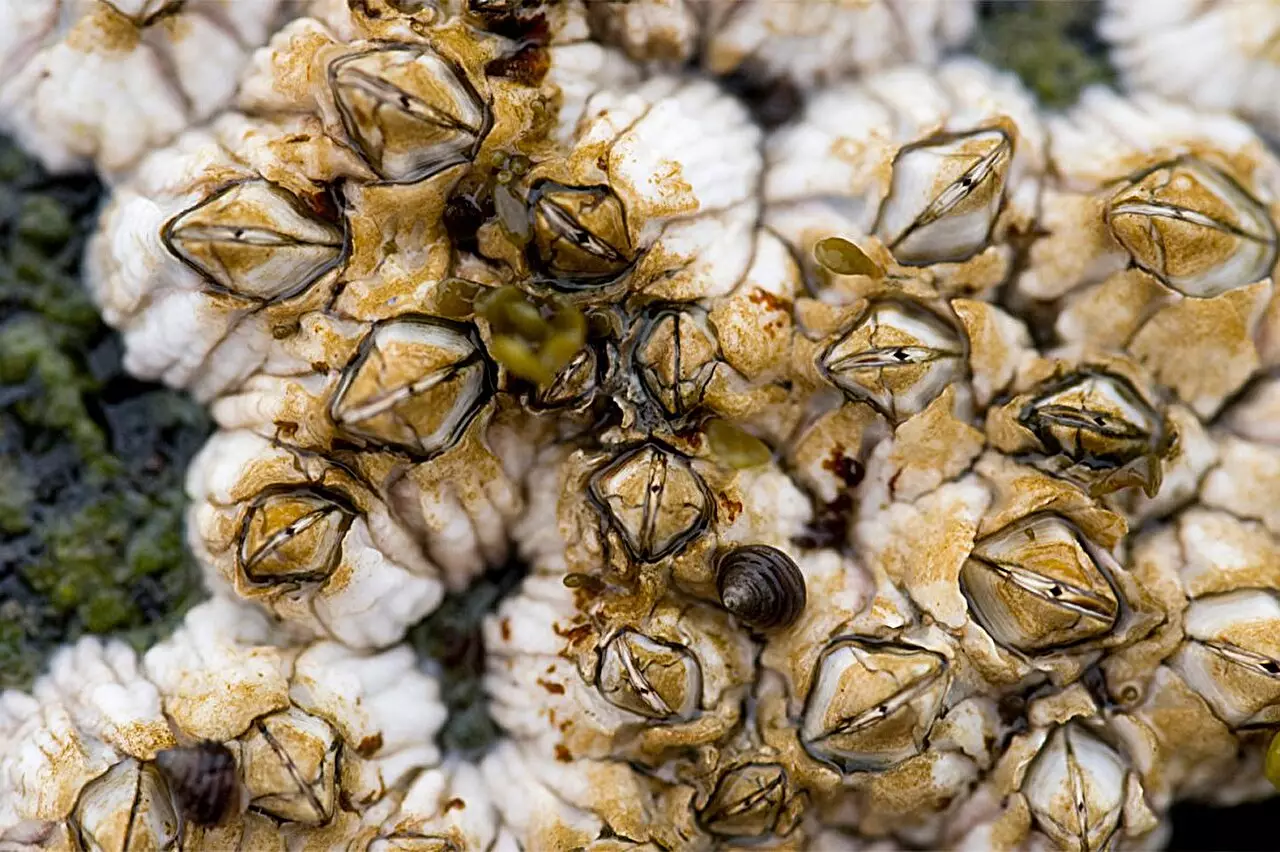The study of biofilms presents intriguing challenges and opportunities within various fields, particularly in medicine and industry. Biofilms are dense clusters of microorganisms that adhere to surfaces, including human tissues and industrial components, creating protective environments conducive to their survival. Research in this area has revealed that a staggering 60% to 80% of chronic wounds contain biofilms, complicating treatment and increasing the risk of persistent infections. Conventional antibiotics often fail against these dormant communities, which do not react to standard pharmaceutical interventions designed for actively metabolizing bacteria. Thus, a breakthrough method to dismantle these biofilms is essential and could revolutionize treatment protocols.
One remarkable case of biofilm management can be observed in barnacles, which utilize natural chemicals to clear surfaces of harmful bacteria before affixing themselves permanently. Capitalizing on this biological process, Professor Abraham Joy and his team at Northeastern University are exploring how synthetic materials can replicate this mechanism to dislodge biofilms on various surfaces. They have synthesized a polymer adept at adhering to wet environments, raising the intriguing possibility of utilizing it to disentangle biofilms not only in medical scenarios but also in industrial applications.
Joy emphasized the significance of understanding interactions between biofilms and the surfaces they inhabit. The goal is not to eradicate the bacteria outright but to weaken the biofilm’s structural integrity—the “house” that shields the bacteria—enabling conventional treatments to become effective. By breaking down the protective environment of the biofilm, researchers aim to expose the bacteria to antibiotics, allowing these medications to exert their therapeutic effects more efficiently.
Unraveling Potential Treatments
The findings published in the Journal of the American Chemical Society highlight that Joy’s polymer successfully removed nearly 99% of biofilm containing Pseudomonas aeruginosa, a major threat due to its antibiotic resistance. However, its efficacy diminished when applied to biofilms rich in Staphylococcus and E. coli. This discrepancy stems from the differing compositions of these biofilms, with Pseudomonas primarily comprising carbohydrates, while the other strains are more protein-dominant. Hence, the ongoing research aims to dissect these compositions further, seeking to optimize the polymer’s interaction with each biofilm type.
The immediate aspiration involves testing these polymers in liquid form directly on living tissues to evaluate their practical application in wound care settings. If successful, this innovative method could represent a substantial leap in biofilm management, particularly for chronic wounds that resist standard treatments.
A critical dimension of this research is the ability to tailor polymer composition to target specific bacteria effectively. Joy expresses hope that, with further exploration, the scientific community can develop specialized polymers geared towards specific pathogens, enhancing the treatment landscape for multiple bacterial infections. The overarching goal is to create a versatile tool that responds proficiently to bacterial diversity encountered in both clinical and industrial environments.
However, this endeavor is fraught with challenges that require a nuanced understanding of the polymers’ physical properties. Joy draws an analogy between the biofilm and grass on a lawn, positing that the polymer solution must exhibit an optimal balance of hydrophobic and hydrophilic characteristics to effectively disrupt and remove the biofilm. Finding this balance remains a central focus of ongoing experiments.
A Call for a New Paradigm in Antibiotic Design
The implications of this research extend beyond mere elucidation of current methodologies; they advocate for a paradigm shift in antibiotic design and application. Joy’s research emphasizes the need to assess the physical mechanics and properties of biofilms rather than solely focusing on the bacteria themselves. This innovative approach could lead to the development of antibiotics that actively consider the unique challenges posed by biofilms and their complex structures.
In essence, the lessons drawn from nature can guide scientists towards more effective treatments for stubborn infections. As the research progresses, the aim is to encourage dialogue on how to approach the persistent issue of biofilms through technology that aligns more closely with biological processes.
As we explore these intriguing intersections between nature and technology, the future of treating antibiotic-resistant infections may become not just a hope, but a reality through the continued evolution of bioengineering sciences. With each scientific advancement, the dream of effectively managing stubborn biofilms inches closer to fruition, reinforcing the importance of collaborative efforts between biology and engineering.


Leave a Reply